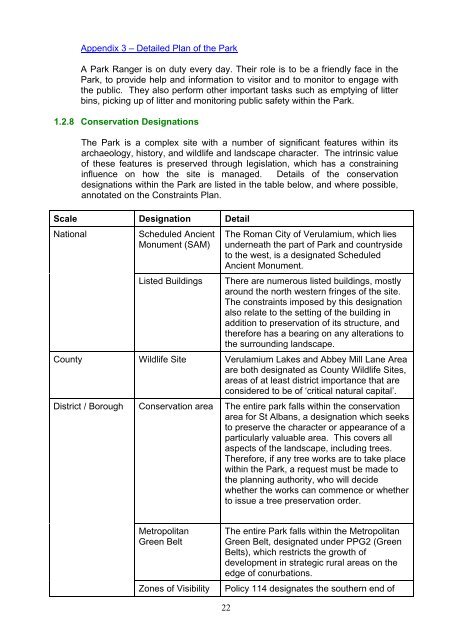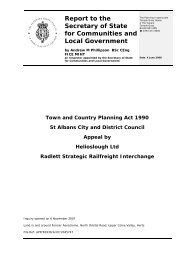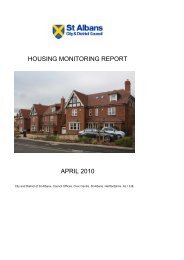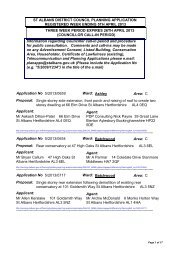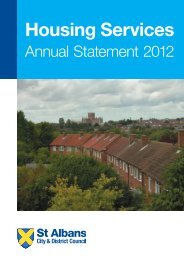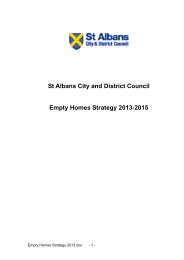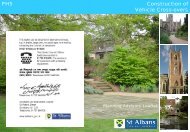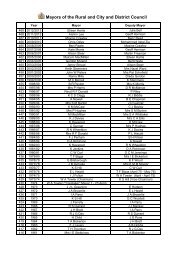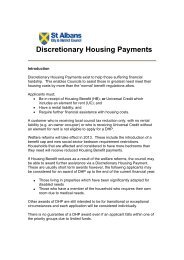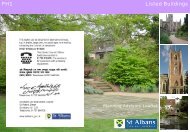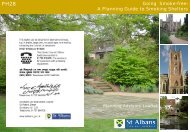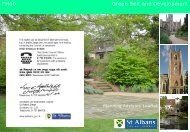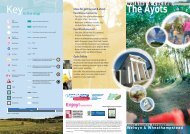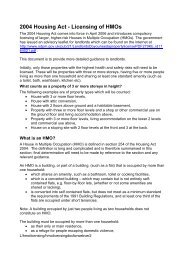Verulamium Park Management Plan 2012-2017 v2.1
Verulamium Park Management Plan 2012-2017 v2.1
Verulamium Park Management Plan 2012-2017 v2.1
You also want an ePaper? Increase the reach of your titles
YUMPU automatically turns print PDFs into web optimized ePapers that Google loves.
Appendix 3 – Detailed <strong>Plan</strong> of the <strong>Park</strong><br />
A <strong>Park</strong> Ranger is on duty every day. Their role is to be a friendly face in the<br />
<strong>Park</strong>, to provide help and information to visitor and to monitor to engage with<br />
the public. They also perform other important tasks such as emptying of litter<br />
bins, picking up of litter and monitoring public safety within the <strong>Park</strong>.<br />
1.2.8 Conservation Designations<br />
The <strong>Park</strong> is a complex site with a number of significant features within its<br />
archaeology, history, and wildlife and landscape character. The intrinsic value<br />
of these features is preserved through legislation, which has a constraining<br />
influence on how the site is managed. Details of the conservation<br />
designations within the <strong>Park</strong> are listed in the table below, and where possible,<br />
annotated on the Constraints <strong>Plan</strong>.<br />
Scale Designation Detail<br />
National<br />
Scheduled Ancient<br />
Monument (SAM)<br />
Listed Buildings<br />
The Roman City of <strong>Verulamium</strong>, which lies<br />
underneath the part of <strong>Park</strong> and countryside<br />
to the west, is a designated Scheduled<br />
Ancient Monument.<br />
There are numerous listed buildings, mostly<br />
around the north western fringes of the site.<br />
The constraints imposed by this designation<br />
also relate to the setting of the building in<br />
addition to preservation of its structure, and<br />
therefore has a bearing on any alterations to<br />
the surrounding landscape.<br />
County Wildlife Site <strong>Verulamium</strong> Lakes and Abbey Mill Lane Area<br />
are both designated as County Wildlife Sites,<br />
areas of at least district importance that are<br />
considered to be of ‘critical natural capital’.<br />
District / Borough<br />
Conservation area<br />
The entire park falls within the conservation<br />
area for St Albans, a designation which seeks<br />
to preserve the character or appearance of a<br />
particularly valuable area. This covers all<br />
aspects of the landscape, including trees.<br />
Therefore, if any tree works are to take place<br />
within the <strong>Park</strong>, a request must be made to<br />
the planning authority, who will decide<br />
whether the works can commence or whether<br />
to issue a tree preservation order.<br />
Metropolitan<br />
Green Belt<br />
Zones of Visibility<br />
The entire <strong>Park</strong> falls within the Metropolitan<br />
Green Belt, designated under PPG2 (Green<br />
Belts), which restricts the growth of<br />
development in strategic rural areas on the<br />
edge of conurbations.<br />
Policy 114 designates the southern end of<br />
22


